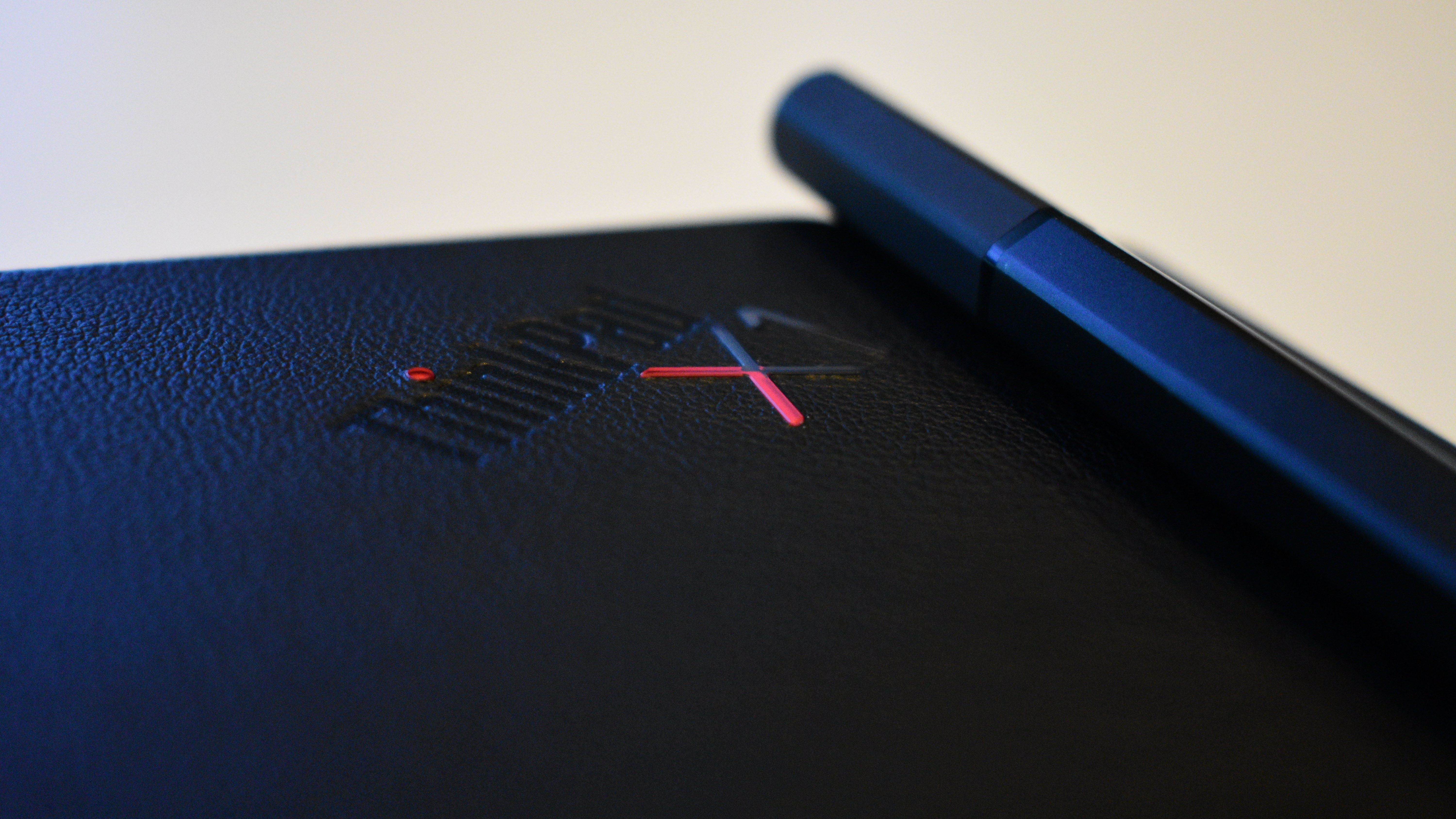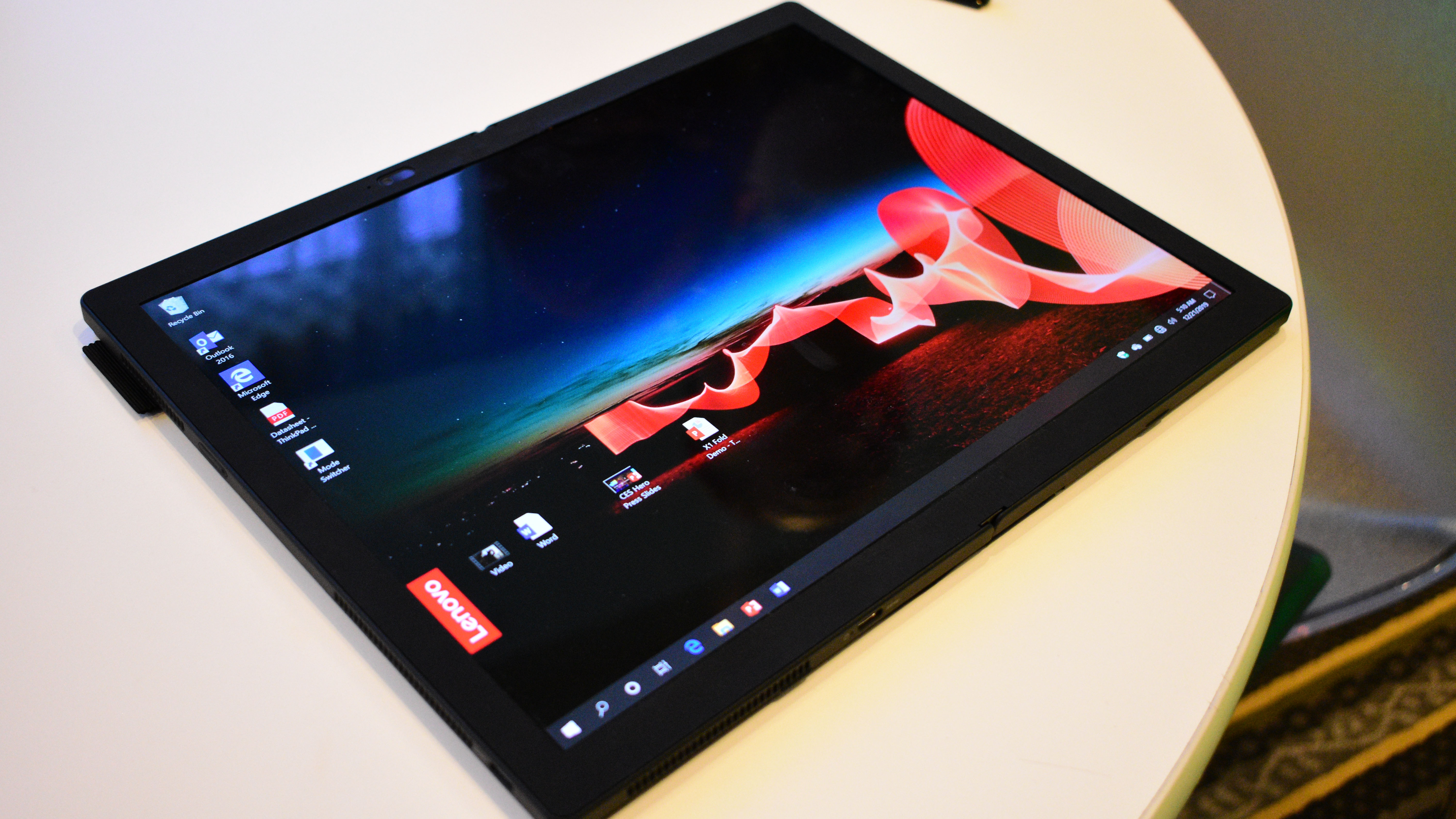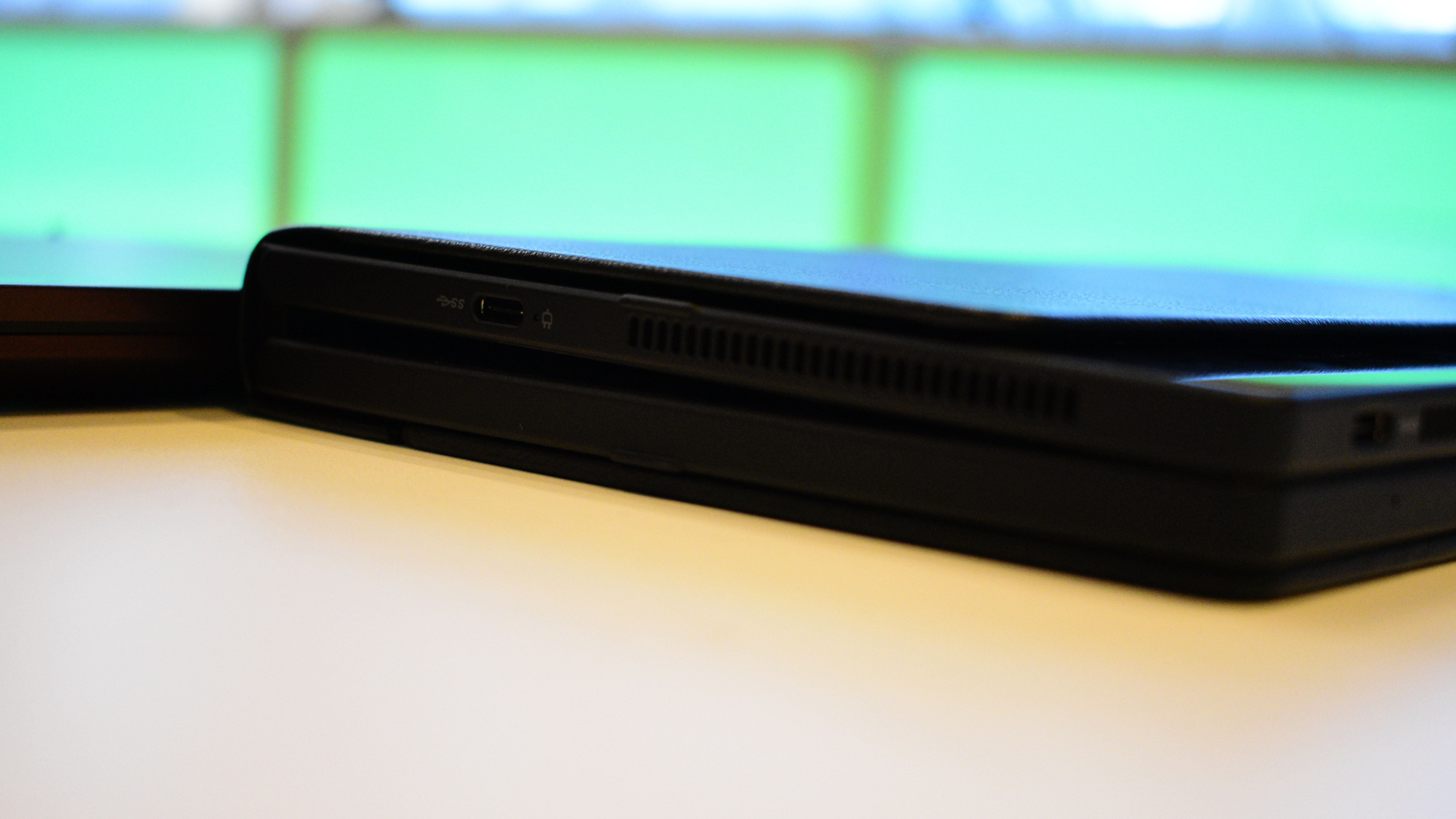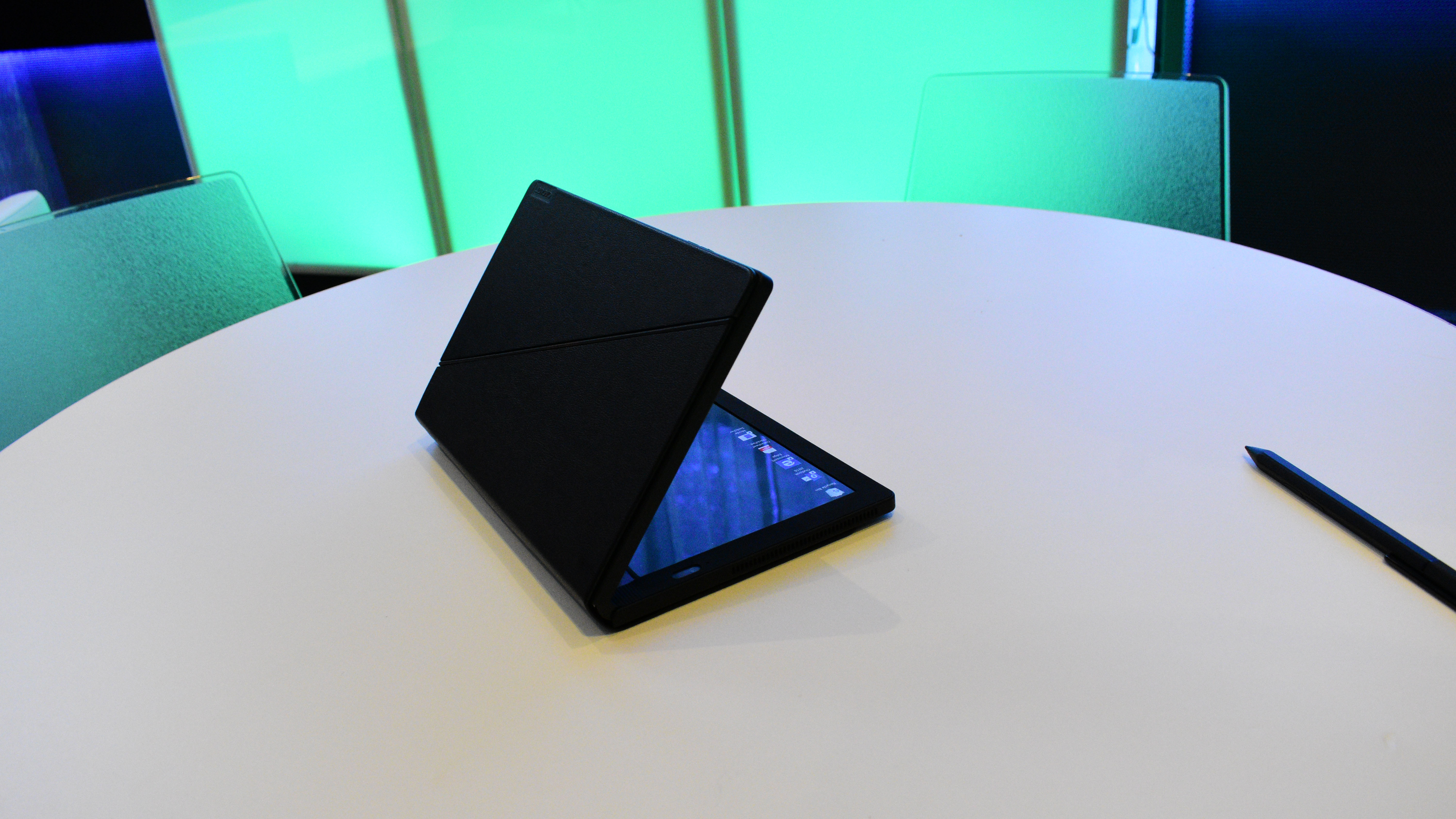Early Verdict
The Lenovo Thinkpad X1 Fold is finally confirmed to be a real product, and it's heading to market in 2020. However, Windows 10X is still a ways away, so the Lenovo X1 Fold has a lot to prove if it is indeed going to be the first foldable laptop on the market.
Pros
- +
Impressive folding display
- +
OLED at 2K resolution
- +
Solid stylus support
- +
Versatile use cases
Cons
- -
Thick bezels
- -
Expensive
Why you can trust TechRadar
Note: The business-focussed ThinkPad X1 Fold is now available to order and will ship in a few weeks. he dedvice comes with optional 5G, a 13.3-inch OLED display and is powered by an Intel Core i5 processor with Intel Hybrid Technology. There's 8GB of RAM, a 256GB SSD, a 50Whr battery and ... Windows 10 Home. Expect a review soon.
At CES 2020, the future of computing became a little more visible, and it looks like foldable displays are going to take over. We already saw the Lenovo Thinkpad X1 Fold in May 2019, but so much has changed since then.
We've seen foldable laptops from Microsoft, Dell and even Intel since then, so Lenovo's bet on the future seems to be paying off. Plus, the way it looks right now, the Lenovo Thinkpad X1 Fold may very well be the first of its kind to actually make it to market.
It’s too early in the product’s life cycle to judge whether the device will deliver on this promise, but consider us wowed by what Lenovo has been able to achieve this far.

Price and availability
After years of development and an early sneak peek last year, we finally know how much we'll be forking over for the Lenovo Thinkpad X1 Fold. And, well, it's not cheap. You're looking at a $2,499 or $2430 (about AU$3,620) to jump in on this action. That's an expensive laptop, to be sure, but you have to keep in mind that you're essentially paying an early adopter tax here. If you want the first major foldable laptop, it's going to be expensive.
As for when it'll come to market, that we don't really know. Lenovo is telling us "later in 2020", but we don't have any kind of solid date. We're sure Lenovo will update us when it gets closer to launch.








Design
The foldable laptop naturally goes for an “innie” foldable display design in this case, meaning that the display folds in on itself, considering that an “outie” design wouldn’t be practical for use as a laptop.
Sign up to the TechRadar Pro newsletter to get all the top news, opinion, features and guidance your business needs to succeed!
At any rate, the LG-made display is coated in plastic rather than glass, as the latter has not yet been developed to support bending. We did talk to Lenovo quite a bit when we were trying out the device at CES 2020, and we both fantasized a little bit about what the future of foldable devices will look like, particularly with graphene, if that wonderful tech ever makes it to mass market.
Still, the rather wide bezels are joined by a singular torque hinge that protrudes a bit from both sides of the device’s mid section with some sort of rubberized fabric used as the connective tissue conducive to bending. Lenovo is including a pen, and rather than magnetic attachment, like we saw back when the X1 Fold was still in its prototype phase, there's a little loop that you can slot the stylus into.
Which brings us to the leather cover that spans the back of the laptop. When the Lenovo Thinkpad X1 Fold is closed, there's a wonderful leather cover that makes it feel like a book or a folio case. And, when you un-fold the laptop to use it, this case moves to allow for easier movement. Now, we're sure this isn't super necessary to the design of the device, but it does stop it from being an eyesore around the back. And, when you're going for a device this expensive, aesthetics matter a lot.
Of course, the display will support pen input but also multi-touch... but the pen Lenovo had at CES 2020 wasn't operational, just a dummy to give us an idea of how it would look and such. Lenovo says this is because the pen design hasn't been finalized, which is fine, we just wish we could have played around with it a bit.
The latter works well enough as well, with a new touch typing interface in the works in conjunction with Microsoft, as this will be a Windows device. However, there will be no haptic feedback in this product for touch typing, which we will certainly miss.
However, to combat this odd experience, Lenovo will include a keyboard, though it didn't have one available in our time with the device.
Being a plastic panel, glare is a notable concern. We obviously tested this device in a room without a ton of extraneous lights (thankfully it wasn't on the CES 2020 show floor), but we can see it being a problem if you're trying to get some work done in the park, if that's your thing.
Ultimately, we’re well impressed by the thing and what it could mean for computing in the future. With support for a Bluetooth keyboard available, this could truly be a portable PC with a pseudo-dual-screen environment just a flip away.
Reading ebooks on this device would be a particularly pleasing experience, as could watching videos on the go (i.e. in a plane) at a slight bend. The screen displays content at 4:3 aspect ratio, however, which could be weird for all sorts of use cases – but nothing distractingly so.

Performance
Lenovo is positioning the Thinkpad X1 Fold as a device for professionals and executives on the go, and as such it needs to be able to perform with the best of them. But, the rub is that we don't know what silicon is hiding behind this laptop.
However, at CES, Lenovo told us that it is an "unannounced Intel processor", which leads us to start speculating on what it could be. There are two main possibilities here: Intel Tiger Lake and Lakefield. Our money is on the latter.
Intel Lakefield processors were teased way back at CES 2019, and are the perfect candidate for a foldable laptop like this. The idea is to tackle small form-factor computers in much the same way as a phone's silicon with an entire System on a Chip (SOC). So it's very possible that the Lenovo Thinkpad X1 Fold will be the first Lakefield-equipped product on the market, but only time will tell if our speculation is correct.
Beyond that, Lenovo is being very cagey about the specs behind this foldable device. We assume it will have a strong 16GB of RAM and a fast SSD but beyond that we don't really know what it will be capable of. Either way, we're looking forward to getting it in for testing.

Early verdict
Back when it was a prototype, the Lenovo ThinkPad X1 Fold gave us a glimpse into what foldables would look like. And, now that we know it's a real product and have seen similar concepts and announcements from other major computing companies, we know that it really is a futuristic product.
The price tag will likely stop a lot of people from jumping into this technology super early, with only executives and tech enthusiasts with deep pockets jumping into this platform. Lenovo knows that this is the case, and is definitely targeting this exact audience.
So if you're looking to get an early glimpse at what a possible future for computing will look like, you might want to keep an eye on the Lenovo ThinkPad X1 Fold when it hits the streets later in 2020. We know we will.
- Check out all of TechRadar's CES 2020 coverage. We're live in Las Vegas to bring you all the breaking tech news and launches, plus hands-on reviews of everything from 8K TVs and foldable displays to new phones, laptops and smart home gadgets.
Jacqueline Thomas (Twitter) is TechRadar's former computing editor and components queen. She is fat, queer, and extremely online, and is currently the Hardware and Buying Guides Editor for IGN.
What is a hands on review?
Hands on reviews' are a journalist's first impressions of a piece of kit based on spending some time with it. It may be just a few moments, or a few hours. The important thing is we have been able to play with it ourselves and can give you some sense of what it's like to use, even if it's only an embryonic view. For more information, see TechRadar's Reviews Guarantee.
